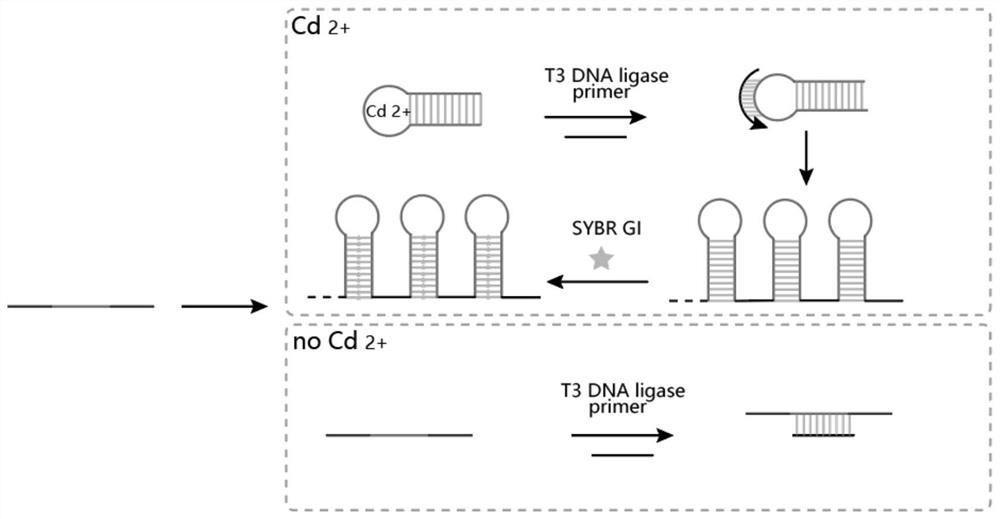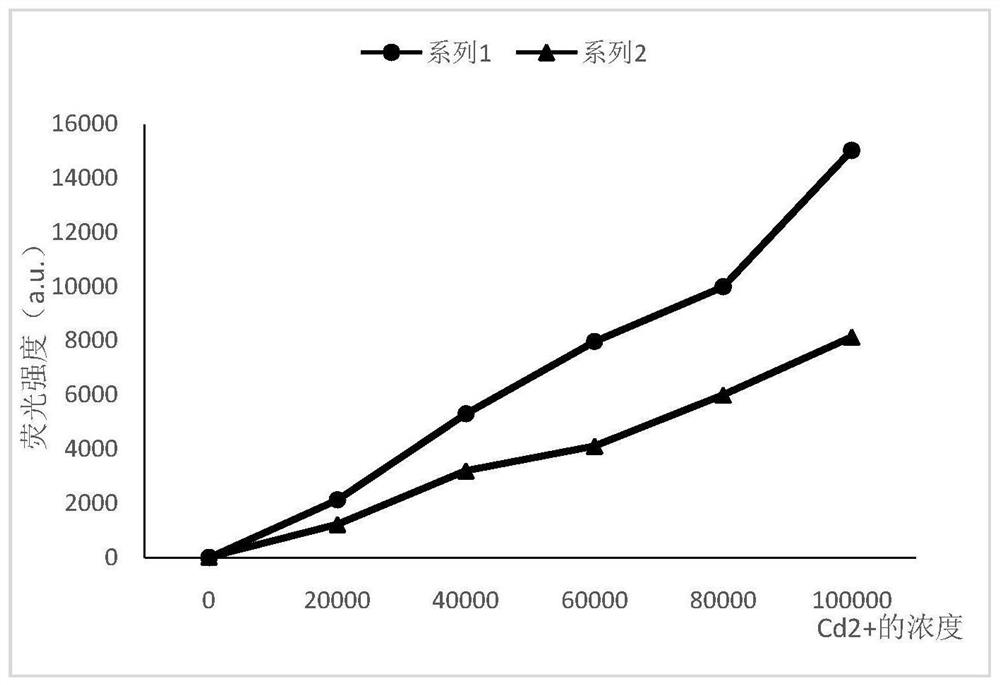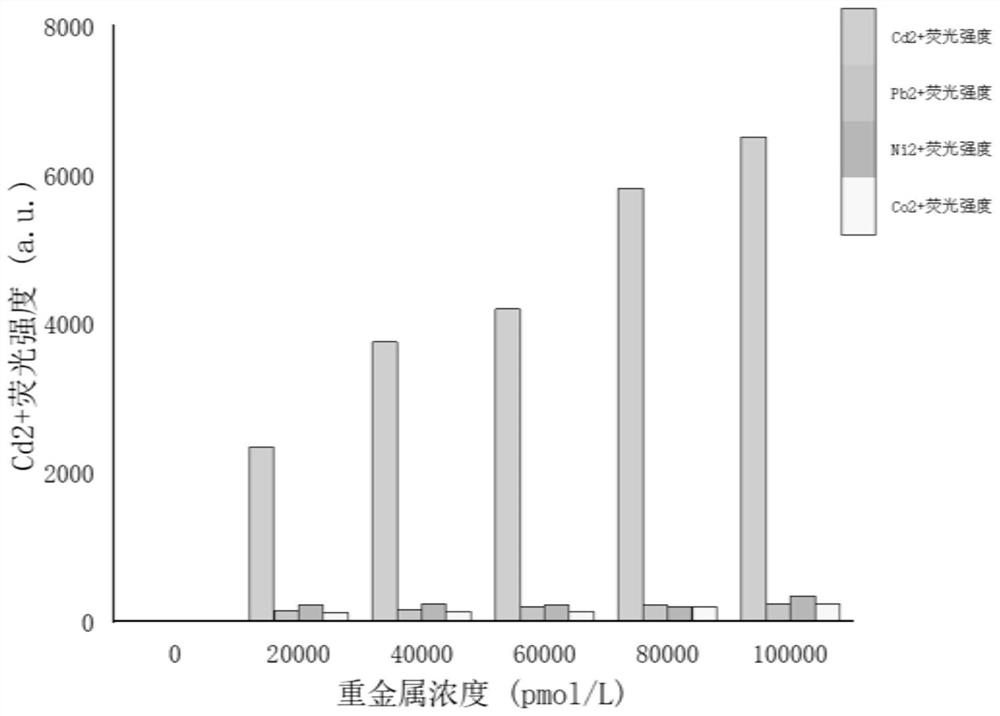Cadmium ion detection method based on T3 DNA ligase
A detection method and technology for cadmium ions, which can be used in the determination/inspection of microorganisms, biochemical equipment and methods, etc., and can solve the problems of large amount of products and non-specific binding.
- Summary
- Abstract
- Description
- Claims
- Application Information
AI Technical Summary
Problems solved by technology
Method used
Image
Examples
Embodiment 1
[0025] Buffer 1 was specifically prepared as follows: 132mM Tris-HCl, 2mM ATP, 20mM MgCl2, 2mM DTT, 15% PEG6000 (pH 7.6@25°C)], 25°C.
[0026] Buffer 2 was specifically prepared as follows: 50mM Tris-HCl, 10mM MgCl2, 10mM (NH4)2SO4, 4mM DTT (pH7.5@25°C).
[0027] Preparation of SYBR Green I dye solution: first prepare solution 3, specifically: 10mM Tris-HCl, 10mM EDTA, pH=8.0), and then dilute SYBR Green I dye and solution 3 at a volume ratio of 1:100.
[0028] Table 1 Template sequences used in the T3 DNA ligase-based cadmium ion detection method
[0029] template sequence 5'P-ACTGTTGTGGTATTATTTTTGGTTGTGCAGT-OH 3' Primer sequence 5'-GGTTAATACCAC-3'
[0030] (1) Take 5 μL of sample solutions with different concentrations of cadmium ions and incubate with 5 μL of template sequences. Then add 1 μL of T3 DNA ligase, 20 μL of 2×T3 DNA ligase reaction buffer 1, and 9 μL of deionized water. Incubation was carried out for 20-40min.
[0031] (2) Take 10 μL o...
Embodiment 2
[0035] Sensitivity experiment
[0036] Sample solutions with cadmium ion concentrations of 0, 10, 20, 30, 40, 50, 60, 70, 80, 90 and 100nM were selected for verification. The results are as follows: figure 2 shown. It is determined that the detection linear range is 0-100nM, and the detection limit reaches 0.08ppb.
Embodiment 3
[0038] selective experiment
[0039]Repeat the steps in the implementation example 1, other conditions remain unchanged, select lead ion, nickel ion, cobalt ion to detect fluorescence as interfering elements, obtain the selectivity result figure of this method, under the same conditions, detect the fluorescence of other ions and cadmium ions Value such as image 3 As shown, it can be seen from the figure that the method of the present invention has good selectivity to the target molecule.
PUM
 Login to View More
Login to View More Abstract
Description
Claims
Application Information
 Login to View More
Login to View More - R&D
- Intellectual Property
- Life Sciences
- Materials
- Tech Scout
- Unparalleled Data Quality
- Higher Quality Content
- 60% Fewer Hallucinations
Browse by: Latest US Patents, China's latest patents, Technical Efficacy Thesaurus, Application Domain, Technology Topic, Popular Technical Reports.
© 2025 PatSnap. All rights reserved.Legal|Privacy policy|Modern Slavery Act Transparency Statement|Sitemap|About US| Contact US: help@patsnap.com



